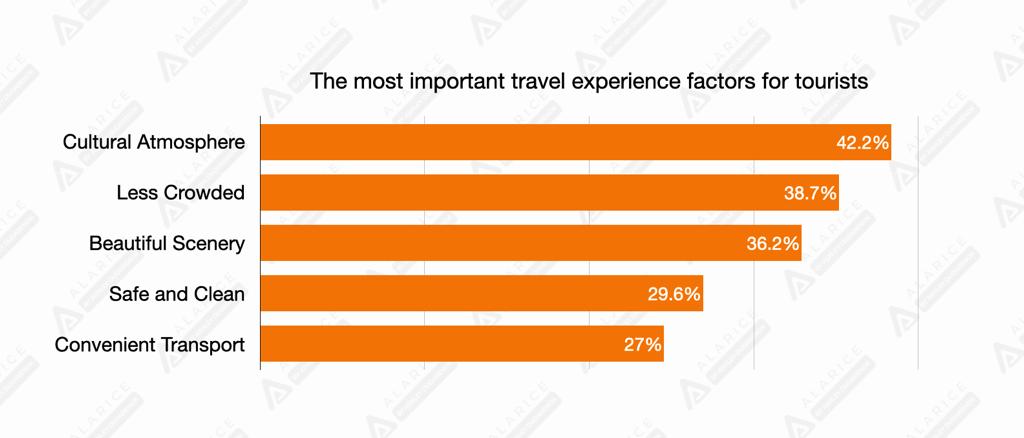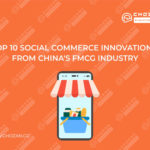Retail travel is getting another boost in China in 2023! The China Tourism Research Institute (CTRI) released a report on February 20 predicting that the tourism market is “expected to see a full recovery” throughout 2023. Annual inbound and outbound tourist arrivals are expected to exceed 90 million in 2023, doubling year-over-year and recovering to 31.5% of pre- pandemic levels.
Due to the impact of the pandemic and related policies, Chinese retail fell into a slump in three years. In June 2022, all duty-free stores in Hainan were in a closed state due to the closure control policy adopted under the pandemic situation, and in the case of CDFG, the impact of the pandemic in Hainan resulted in a significant decline in CDFG’s 2022 Q3 performance. Revenue 39.364 billion yuan, decreasing 20.5% year-on-year.
With the promulgation of new policies, including no more full nucleic acid testing, no requirement to provide proof of COVID-19 testing, no health code checks, which could boost gradual resumption of inbound/outbound travel. China’s travel retail industry showed signs of recovery, with 52,713,400 domestic tourism trips during the 2023 New Year’s Day holiday in2023, up 0.44% year-on-year.
It is important to note that passengers on flights to and from China in the first three months of 2023 were just 12.4% of what they were in the first three months of 2019. However, in the first three months of the year, travelers flying within China achieved 88.6% of pre-pandemic levels.
There is no doubt that China’s travel retail has great potential in 2023. As foreign travel retail companies and tourism departments look to bounce back after the pandemic in 2023, they can look to China for inspiration on how to adapt to the changing market conditions. Let’s take a look at how.
1. Implementing metaverse experiences
McKinsey predicts that the metaverse is expected to create a new market of 34 trillion (RMB) by 2030. In 2022, the metaverse will not only be a distant concept for consumers, but will be relevant to their lives. In 2022, due to the pandemic, many travel retail companies have introduced VR technology to build their own retail metaverse to increase consumer purchase intention and optimize the shopping experience.
In August 2022, DFS, a Hong Kong-based travel retailer of luxury products, officially launched the “DFS Metaverse” virtual digital space to further lead consumers into a more futuristic and interesting interactive world, creating a “virtual luxury playground” that integrates life, creativity, imagination and consumption power”.
At the same time, DFS also launched their own NFT digital collection, design inspired by butterflies. When consumers enter the virtual universe, they can participate in a butterfly catching game in the “landing zone” to catch the exclusive limited edition of the DFS butterfly digital collection. This enhances the shopping experience of consumers and converts “interest” into “purchase”.
Reinforcing the tone of one’s brand through the metaverse, making retail more than just selling things, but a process of communication, adding elements of technology to create an emotional connection with consumers and generate brand association is very important in 2023.
Here are some ways in which countries and travel retailers can use the metaverse to attract tourists:
Virtual tourism experiences to attract Chinese tourists
Countries can create virtual tourism experiences that allow visitors to explore their destinations in a 3D environment. By using VR technology, visitors can experience the local culture, landmarks, and attractions from the comfort of their own homes. Travel retailers can also use the metaverse to showcase their products and services in a virtual environment.
Interactive shopping experiences to attract Chinese tourists
Travel retailers can create interactive shopping experiences in the metaverse that allow customers to try on products and make purchases in a virtual environment. For example, customers can use VR technology to try on clothes or accessories and see how they look before making a purchase.
Social media campaigns to attract Chinese tourists
Countries and travel retailers can use social media platforms that are popular in the metaverse, such as Decentraland or Somnium Space, to launch marketing campaigns and promote their destinations or products. They can collaborate with influencers or gaming communities to create engaging content that attracts visitors to their destinations.
Gamification to attract Chinese tourists
Countries and travel retailers can use gamification to make the metaverse experience more engaging and interactive. For example, they can create scavenger hunts or other games that encourage visitors to explore the virtual environment and learn about the destination.
By using the metaverse, countries and travel retailers can create unique and immersive experiences for visitors that promote tourism and attract new customers. As the metaverse continues to grow and evolve, it is likely to become an increasingly important tool for the travel retail industry.
Want to learn more about how China is utilising the metaverse? Download Ashley Dudarenok’s free mini-book on the topic here. Also, check out her tailored, high-impact keynotes if you want a more in-depth learning here.
2. Using social media to promote tourism
In 2019, tourism apps such as Ctrip and Mafengwo were the most popular ones for travelers. But now, social media has been and will continue to play a big role in tourism 2023. This is especially true for RED. From the perspective of the consumer, it is obvious that consumer behavior has changed a lot. The popular way to go about traveling among Chinese tourists used to be demand- oriented trips. This has changed to interest-oriented trips due to the rise of KOL/KOC content. Because of this, social media now plays a bigger role than traditional travel agencies, OTAs and other platforms when it comes to Chinese tourists.
RED went from a mere sharing community to a seeding community, invisibly promoting products by sharing their own experiences. There are over 12.78 million travel-related posts on RED, and it is an ever-popular topic on RED. Travel has become the second largest category after beauty in RED with the fastest growth rate of notes and interaction.
Indeed, social media is a powerful tool for countries and travel retailers to encourage tourism.
Here are some ways in which they can use social media to promote their destinations and attract visitors:
Engage with influencers
Influencers can help promote a destination or travel retailer by sharing their experiences on social media. Countries and travel retailers can engage with influencers in their niche to create sponsored content that showcases their products and services. This can include sponsored posts, stories, videos, or even live streams.
User-generated content
User-generated content, such as photos and videos shared by tourists, can be a powerful way to promote a destination or travel retailer. Countries and travel retailers can encourage visitors to share their experiences on social media by offering incentives, such as discounts or the chance to be featured on their official accounts.
Hashtags
Hashtags are a great way to organize content and make it easy for users to find information about a destination or travel retailer. Countries and travel retailers can create their own hashtags or use popular ones related to their destination or niche to increase their visibility on social media.
Live streaming
Live streaming is a great way to showcase a destination or travel retailer in real-time. Countries and travel retailers can use live streaming to give viewers a behind-the-scenes look at their products and services, host Q&A sessions, or showcase events and attractions.
Social media advertising
Social media advertising can be a powerful way to reach a wider audience and promote a destination or travel retailer. Countries and travel retailers can use targeted ads on social media platforms to reach users who are interested in their niche or destination.
By using social media, countries and travel retailers can reach a wider audience and promote their destinations and products in a cost-effective way. With the right strategy, social media can be a powerful tool for encouraging tourism and attracting new visitors.
Need help with social media marketing but hiring an agency just isn’t in the budget? Call us and we’ll quickly arrange a call with us for a consultation. We can provide insights and answers to your urgent China digital marketing questions.
3. “Cultural atmosphere” is the most important factor for tourists traveling in 2023.
In the latest survey of Chinese travelers, “cultural atmosphere” is the most important factor for their travel in 2023, followed by less crowded and beautiful scenery. It is obvious that tourists need more products with more local flavor while they are traveling, and want to experience the cultural atmosphere of the destination rather than just visiting and shopping.
In response to this trend, Chinese retail group GDF held a Chinese traditional culture experience campaign during the Chinese New Year, offering Chinese traditional costume fitting service, Chinese spirits tasting and poetry contest to leverage offline traffic. In the pre-event period, GDF invited Douyin KOLs to pre-promote the event, which received more than 15,000 likes. The event promoted Chinese traditional, which campaign was supported by official government newspapers, forwarding media including Haikou Daily, China National Radio, etc., which boosted the exposure of the event.
By introducing localized goods and campaigns will be more attractive to consumers, and when the goods have cultural attributes, the Chinese traveler is also getting a cultural experience, with the added emotional and cultural value that the Chinese traveler is seeking in 2023.
Fostering a cultural atmosphere is a powerful way for countries and travel retailers to encourage tourism.
Here are some ways in which they can create a cultural atmosphere to attract visitors:
Celebrate local festivals and traditions
Countries and travel retailers can celebrate local festivals and traditions to showcase their cultural heritage. This can include organizing events, such as cultural performances, food fairs, and art exhibitions that highlight the unique aspects of the destination.
Offer cultural tours and experiences
Countries and travel retailers can offer cultural tours and experiences that allow visitors to immerse themselves in the local culture. This can include guided tours of historical sites, museums, and cultural attractions, or experiences such as cooking classes, language lessons, or traditional craft workshops.
Promote local products
Countries and travel retailers can promote local products that showcase the cultural heritage of the destination. This can include souvenirs, handicrafts, or local food and drinks.
Collaborate with local artists and artisans
Countries and travel retailers can collaborate with local artists and artisans to showcase their work and promote the local culture. This can include art exhibitions, performances, or workshops that allow visitors to interact with local artists and learn about their craft.
Support local communities
Countries and travel retailers can support local communities by promoting sustainable tourism practices that respect the local culture and environment. This can include supporting local businesses, conserving natural resources, and promoting responsible tourism practices.
By fostering a cultural atmosphere, countries and travel retailers can create a unique and memorable experience for visitors that showcases the local culture and heritage. This can help to attract new visitors and encourage repeat visits, while also promoting a positive image of the destination.
Conclusion
Businesses can learn from China’s success in the travel retail industry by adapting to changing market conditions, focusing on demographics, leveraging social media platforms, introducing localized goods and campaigns, and improving the consumer online shopping experience. By embracing new technologies and business models, catering to local tastes, prioritizing the customer experience, and emphasizing sustainability, businesses can stay ahead of the competition and attract new customers in an increasingly globalized marketplace.
In particular, the metaverse, social media, and cultural atmosphere are emerging trends that businesses should pay attention to and learn from China’s successes in these areas to create unique and immersive experiences for customers, reach a wider audience, and showcase the local culture and heritage of their destinations. By implementing these strategies, businesses can thrive in the travel retail industry and continue to attract visitors from around the world.
With China’s opening up, we should expect a comeback in the travel retail sector as well as more competitiveness in the worldwide market. Alarice can help you learn more from China’s successes with our Learn from China trainings, digital China keynotes and more. Contact us here for more information.
Sources:
http://stock.finance.sina.com.cn/stock/go.php/vReport_Show/kind/search/rptid/720478023118/index.phtml.
https://www.8btc.com/article/6795982
https://data.eastmoney.com/notices/detail/01880/AN202208301577859518.html.
http://www.nhc.gov.cn/xcs/gzzcwj/202212/8278e7a7aee34e5bb378f0e0fc94e0f0.shtml?R0NMKk6uozOC=1670401398227
https://www.sohu.com/a/649217062_121666226
https://www.fxbaogao.com/detail/3583131










